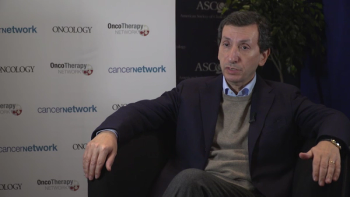
Maintenance therapy with TKIs following allogeneic HSCT is feasible and may improve outcomes in patients with high-risk Philadelphia chromosome–positive leukemia.

Your AI-Trained Oncology Knowledge Connection!


Maintenance therapy with TKIs following allogeneic HSCT is feasible and may improve outcomes in patients with high-risk Philadelphia chromosome–positive leukemia.

Researchers at the University of North Carolina Lineberger Comprehensive Cancer Center have recently discovered how gene mutations keep blood stem cells from maturing, leading to the development of AML.

Dietary, pet, and social contact restrictions did not have any effect on infectious complications in children undergoing intensive treatment of acute myeloid leukemia.

A study covering 4 decades of patients with chronic myeloid leukemia in Sweden found dramatic improvements in life expectancy since the advent of tyrosine kinase inhibitor therapy.

Similar survival outcomes were seen in lymphoma patients who underwent related donor haploidentical HCT and HLA-matched sibling donor transplant.

The anti-CCR4 antibody mogamulizumab showed promising response rates compared to investigator’s choice in a randomized phase II trial of relapsed/refractory adult T-cell leukemia/lymphoma.

In this video we discuss the results of a phase III trial that studied upfront high-dose chemotherapy plus autologous stem cell transplantation (ASCT) compared to chemotherapy alone and bortezomib in newly diagnosed multiple myeloma.

CD38 expression was associated with response to daratumumab monotherapy in patients with multiple myeloma.

Researchers published a study June 12, 2016, in the online issue of The New England Journal of Medicine that suggests progression-free survival and overall survival may both be longer with inotuzumab ozogamicin in ALL.

Patients with follicular lymphoma that responded to rituximab but whose disease later underwent histologic transformation were found to have worse outcomes and may benefit from autologous stem cell transplantation.

The aim of this review is to summarize the current knowledge on HSCT in CLL and to discuss critically its role in the age of novel treatment strategies.

With novel therapeutic agents, is allogeneic HSCT an archaic intervention for patients with CLL?

Selinexor, which is the first drug in a new class of agents known as selective inhibitor of nuclear export compounds, may be helpful in treating patients with relapsed and refractory multiple myeloma.

A retrospective study looking at a small number of women diagnosed with and treated for lymphoma while pregnant found that systemic therapy given after the first trimester was safe and resulted in acceptable maternal and fetal outcomes.

As part of our coverage of the annual ASCO conference, we spoke with Dr. Veronika Bachanova on the role of NK cell therapy in hematologic malignancies.

In this video, Antonio Palumbo, MD, discusses results of the CASTOR trial, which studied daratumumab, bortezomib, and dexamethasone in relapsed or refractory multiple myeloma.

A three-drug regimen that includes daratumumab, bortezomib, and dexamethasone may be the new standard of care for patients with relapsed or refractory multiple myeloma.

Maintenance lenalidomide after autologous stem cell transplantation significantly prolonged survival in patients with multiple myeloma, according to results of a meta-analysis.

A study testing the all oral combination of ixazomib, cyclophosphamide, and dexamethasone showed that patients with newly diagnosed multiple myeloma responded well to the experimental treatment regimen.

Researchers at Weill Cornell Medicine recently published a study in Nature Communications explaining that the rate at which genetically mutated cancer cells grow may help explain why some CLL patients develop treatment resistance.

A 5-year analysis of the DASISION trial showed that dasatinib continued to offer better responses than imatinib in patients with chronic myeloid leukemia.

The US Food and Drug Administration (FDA) granted accelerated approval of nivolumab (Opdivo) based on overall response rate (ORR) in classical Hodgkin lymphoma patients.

A phase II study of the BCL2 inhibitor venetoclax has shown that a large majority of patients with relapsed or refractory chronic lymphocytic leukemia responded to treatment with the drug.

In this article, we elucidate the rationale for use of novel drug combinations in patients with myeloma, and review current evidence-based data supporting the use of specific combinations in various settings. We also attempt to craft a framework to guide clinicians in optimizing the use of combination therapies, to enable patients to derive maximal benefit.

In the past, multiple myeloma was a disease with grim prospects for survival, and few therapeutic options. Today we have a multitude of options, and the armamentarium will continue to expand.